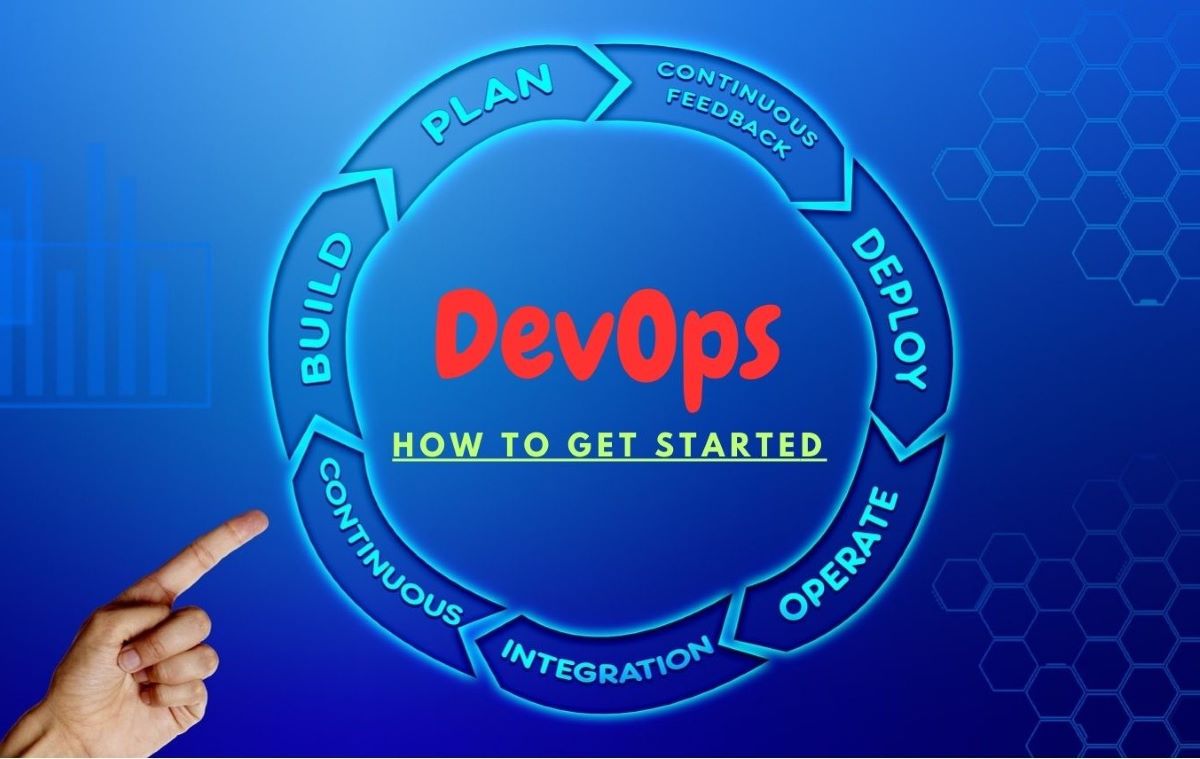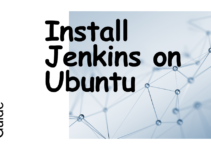DevOps is a software development methodology that emphasizes collaboration between development and operations teams to shorten the software development life cycle and improve the quality of software releases. DevOps is gaining popularity due to its ability to deliver high-quality software at a faster pace. In this article, we will discuss the five easy steps to get started with DevOps.
Get Started with DevOps in 5 Easy Steps
Step 1: Understand DevOps principles and practices
The first step to getting started with DevOps is to understand the principles and practices. DevOps is all about collaboration and communication between development and operations teams. The goal is to create a culture of shared responsibility where everyone is responsible for the success of the software development process.
There are several key principles of DevOps, including:
- Automation: Automate as much of the software development process as possible.
- Continuous Integration (CI): Continuously integrate code changes into a shared repository.
- Continuous Deployment (CD): Continuously deploy code changes to production.
- Monitoring: Monitor the performance of the software and infrastructure.
The first step in getting started with DevOps is to define your DevOps strategy. This involves understanding your current software development and IT operations processes, identifying areas for improvement, and setting goals for your DevOps implementation. Some key questions to ask include:
- What are your current software development and IT operations processes?
- What are your biggest pain points or areas for improvement?
- What are your goals for DevOps implementation?
By answering these questions, you can start to create a roadmap for your DevOps implementation.
Step 2: Build a DevOps culture
The second step to getting started with DevOps is to build a DevOps culture. This involves creating an environment where collaboration, communication, and shared responsibility are encouraged. You need to break down the silos between development and operations teams and create a culture of continuous improvement.
To build a DevOps culture, you need to:
- Encourage collaboration between teams.
- Share knowledge and skills.
- Emphasize the importance of automation.
- Implement a blameless culture.
- Foster a culture of continuous improvement.
The next step is to build your DevOps team. DevOps requires collaboration between software development and IT operations teams, so it’s important to have a team that can work together effectively. This may involve reorganizing your existing teams or creating new teams with members from both software development and IT operations.
When building your DevOps team, consider the following factors:
- Skills: Look for team members with a range of skills, including programming, automation, testing, and operations.
- Communication: Your team members should be able to communicate effectively with each other and with stakeholders.
- Culture: DevOps requires a culture of collaboration, experimentation, and continuous improvement. Look for team members who embrace these values.
Step 3: Automate everything
The third step to getting started with DevOps is to automate everything. Automation is key to reducing errors and increasing efficiency. By automating repetitive and time-consuming tasks, you can free up your team’s time to focus on more important tasks.
Some of the areas you should consider automating include:
- Infrastructure provisioning.
- Code builds and deployments.
- Testing and quality assurance.
- Monitoring and logging.
Automation is a key aspect of DevOps. By automating repetitive and time-consuming tasks, you can reduce errors and improve the efficiency of your software development process. Some areas to consider automating include:
- Build and deployment: Use tools like Jenkins or GitLab CI/CD to automate your build and deployment process.
- Testing: Use tools like Selenium or JUnit to automate your testing process.
- Monitoring: Use tools like Nagios or Grafana to automate your monitoring and alerting process.
When implementing automation, it’s important to start small and gradually build on your success. Don’t try to automate everything at once, as this can be overwhelming and counterproductive.
Implement Continuous Integration (CI) and Continuous Deployment (CD)
The fourth step to getting started with DevOps is to implement Continuous Integration (CI) and Continuous Deployment (CD). CI is the practice of continuously integrating code changes into a shared repository. CD is the practice of continuously deploying code changes to production.
To implement CI/CD, you need to:
- Use version control to manage code changes.
- Set up a CI/CD pipeline.
- Automate testing and quality assurance.
- Continuously deploy code changes to production.
Step 4: Measure Your Success
Measuring your success is a crucial step in DevOps. By tracking key metrics like lead time, deployment frequency, and mean time to recovery, you can identify areas for improvement and track your progress over time. Some key metrics to consider include:
- Lead time: The time it takes to go from code commit to production deployment.
- Deployment frequency: The number of deployments per unit of time.
- Mean time to recovery: The time it takes to recover from a failure or outage.
By tracking these metrics, you can identify bottlenecks in your software development process and work to eliminate them.
Step 5: Continuously Improve
The final step in getting started with DevOps is to continuously improve. DevOps is a continuous process of experimentation, learning, and improvement. Some key areas to focus on include:
- Collaboration: Continuously work to improve collaboration between software development and IT operations teams.
- Automation: Continuously look for new opportunities to automate your software development process.
- Culture: Continuously work to build a culture of collaboration, experimentation, and continuous improvement.
By continuously improving, you can ensure that your DevOps implementation stays relevant and effective over time.
Monitor and optimize the process
The final step to getting started with DevOps is to monitor and optimize the process. Monitoring is key to identifying issues early and resolving them quickly. By monitoring the performance of the software and infrastructure, you can optimize the process and improve the quality of the software releases.
To monitor and optimize the process, you need to:
- Set up monitoring and logging tools.
- Define and track key performance metrics.
- Continuously optimize the process.
Conclusion
Getting started with DevOps can seem daunting, but by following these five easy steps, you can set yourself up for success. Remember to define your DevOps strategy, build your DevOps team, implement automation, measure your success, and continuously improve. With DevOps, you can deliver high-quality software at a faster pace, reduce errors and downtime, and improve the overall efficiency of your software development process.
FAQs
1. What is DevOps?
DevOps is a methodology that aims to improve collaboration, communication, and automation between software development and IT operations teams.
2. What are the benefits of DevOps?
DevOps can help you deliver high-quality software at a faster pace, reduce errors and downtime, and improve collaboration between teams.
3. Do I need to be a developer to use DevOps?
No, you don’t need to be a developer to use DevOps. DevOps is a methodology that can be used by anyone involved in the software development process.
4. What tools do I need to get started with DevOps?
There are many tools available for DevOps, including version control systems, build and deployment tools, testing and quality assurance tools, monitoring and alerting tools, and more. The specific tools you need will depend on your organization’s needs and goals.
5. Can DevOps be implemented in any organization?
Yes, DevOps can be implemented in any organization, regardless of size or industry. However, the specific implementation may vary depending on the organization’s unique needs and goals.
End of the article, We’ve explained how to get started with DevOps in 5 easy steps.
See also:
10 Essential DevOps Tools for Your Business: Automate and Streamline Your Workflow
Streamline IT Operations with Rundeck: A Comprehensive Guide
Job Responsibilities of a DevOps Engineer
Top 20 Jenkins Best Practices for Efficient and Secure CI/CD Workflows
How To Install Jenkins on Rocky Linux 8 or CentOS 8
Steps to Install Git on Ubuntu 20
Job Responsibilities of a DevOps Engineer
How to Install Nagios on CentOS 7
How to Monitor Linux System with Grafana and Telegraf
How to Install Nagios on Ubuntu 20
How to Add Linux Host to Nagios Monitoring Server










